#Saguinus oedipus
Text

Cotton-top Tamarin
#cotton top tamarin#tamarin#monkey#Saguinus oedipus#Primates#Haplorhini#Simiiformes#Callitrichidae#Saguinus#upl
54 notes
·
View notes
Text


Tití cabeza de algodón. (Saguinus oedipus).
2 notes
·
View notes
Text
Creature Awaits #166
Each week I plan to feature an amazing creature, admiring God's fantastic artistry. Hopefully it’ll brighten someone’s day to see something new and interesting if they haven’t seen it before. : )
Welcome to "Cool Hair, Bro!" month, where we'll be featuring animals with awesome "hairstyles"... : )

(Amazing photograph taken by the highly-skilled, Wade Tregaskis (CC BY-NC 2.0))
The Cotton-Top Tamarin
Scientific Name: Saguinus oedipus
Region: Only a small region of Northern Columbia : (
Size: About an 8.2"-10.2" (~20.8cm-25.9cm) head through body length, with a 13"-16" (~33cm-41cm) tail
Interesting Notes: In German, this adorable New World monkey's lively locks have earned it the moniker "Lisztaffe" (or "Liszt monkey") in honor of 19th century Hungarian pianist, musical educator and composer Franz Liszt. It is sadly considered critically endangered due to deforestation and illegal pet trading.
#creatureawaits#Cotton-Top Tamarin#Saguinus oedipus#Lisztaffe#Liszt monkey#Franz Liszt#cool hair#cool hair bro#endangered species#cute animals#cool animals
12 notes
·
View notes
Text
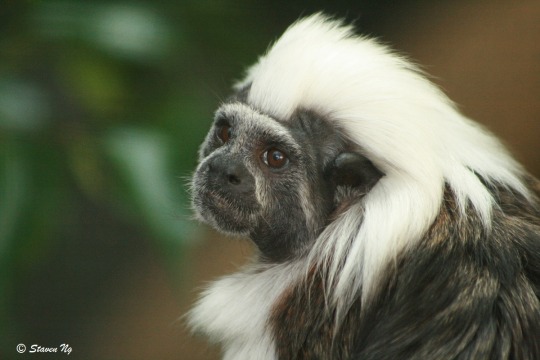
Cotton-headed Tamarin (Saguinus oedipus) - Central Park Zoo, New York, USA
0 notes
Text

Cotton-top Tamarin (Saguinus oedipus)
Endemic to northwestern Colombia
is critically endangered in the wild.
136 notes
·
View notes
Text
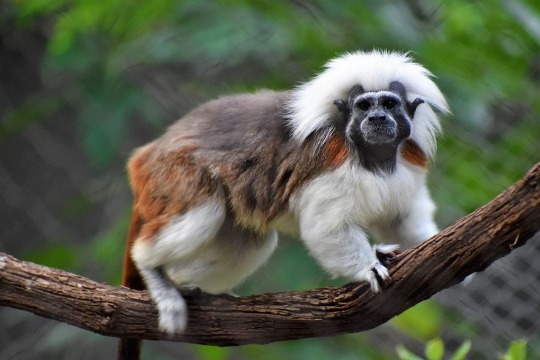
Cotton-top tamarin (Saguinus oedipus)
This monkey is alternatively known as Lisztaffe in German, due to its supposed similarities to 19th century composer Franz Liszt. It is today found only in a small area of Colombian forest, and feeds on fruits, seeds, sap, insects, and other small animals. It has a complex society, as well as communication involving a simple system of grammar which juveniles seem to learn.
#markhors-menagerie#primates#new world monkeys#animal facts#fun facts#animals#biology#cotton top tamarin#tamarin
43 notes
·
View notes
Text

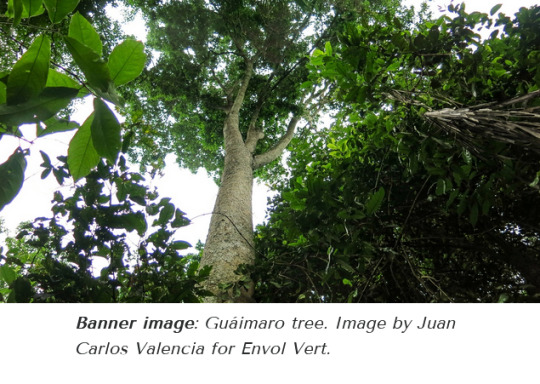


“This makes me very happy, this is why we came down from the Sierra, to see the people celebrating the guáimaro tree,” says Orfelina Perez Restrepo, an Indigenous Yupa whose ancestral lands overlap with the lush valleys and rugged ridges of the Serranía del Perijá, a mountain range that runs along Colombia’s northeastern border with Venezuela.
Perez Restrepo has made the three-hour trek down the mountain [...] to attend the Festival of Guáimaro in the bustling highway town of Becerril. Held annually for the past nine years, this all-day festivity is filled with dancing, games and even a cooking competition, all centered on guáimaro (Brosimum alicastrum), or the “tree of life,” according to the Yupa.
“We cook these nuts and eat them because they have high nutritional value and even help to heal from sicknesses,” Perez Restrepo says. Known as ramon or nuez Maya (Maya nut) in Mexico, and ojushte in El Salvador, guáimaro has been a dietary staple and source of natural medicine for pre-Colombian societies in the tropical Americas for millennia. But in recent decades it’s become increasingly harder to find, according to Perez Restrepo
---
The guáimaro tree is a keystone species of Colombia’s tropical dry forest, an incredibly biodiverse ecosystem with species adapted to surviving long dry spells between rainy seasons. The tropical dry forest is located predominantly along and near the country’s Caribbean coast, but is also found further south in smaller, disconnected patches.
One of Colombia’s most threatened ecosystems according to the Humboldt Institute, the tropical dry forests are home to more than 2,600 species of plants, 230 species of birds, and 60 mammal species. The latter include seven species of primates, including the critically endangered cotton-top tamarin (Saguinus oedipus), a squirrel-sized monkey with a thick white mane found only in a handful of patches of primary tropical dry forest in Colombia’s Caribbean region.
The guáimaro tree, which thrives along riverbanks, can grow to a height of 45 meters (150 feet) high, provides food and shelter for both humans and animals in the tropical dry forest, and helps fix the soil and protect waterways. But deforestation threatens the tree’s survival: about 65% of the cleared land within the dry tropical forest has become affected by desertification [...].
---
But for Perez Restrepo, the Festival of Guáimaro brings hope that the forest is making a comeback. “We are making products from the forest like dulce de guáimaro, dulce de orejero, hummus de orejero, and marmalade of pineapple with camajón, all of which go deliciously on these breads and cookies made with guáimaro flour,” says Ana Flor Hernandez from behind one of the stalls at the festival. [...]
Tapping into a [...] bioregional culinary scene in Colombia, Tamandua now supplies several restaurants in the country’s capital with raw products like guáimaro flour. “We use guáimaro flour for everything, from crusts for chicken and meats, to flour to make empanadas, to dough for other baked goods, and even as colors and flavoring for things like ice cream,” says Eduardo Martinez, chef, agronomist and co-founder of [...] a [...] restaurant in Bogota’s [...] Chapinero Alto neighborhood. [...] “Our dominant forms of food production, both cattle grazing and monocultures, are destructive to our biodiversity and it is time that we address this,” [Felipe Garcia Cardona of Humboldt’s Biodiversity Sciences Program] says. In the case of guáimaro, almost every part of the tree can be used, Garcia Cardona tells Mongabay [...].
---
Headline, images, captions, and all text by: Ocean Malandra. “Colombia’s ‘tree of life’ births a new culinary and conservation movement.” Mongabay. 23 January 2023. With photographs by Juan Carlos Valencia and Ocean Malandra. [Some paragraph breaks added by me.]
72 notes
·
View notes
Photo
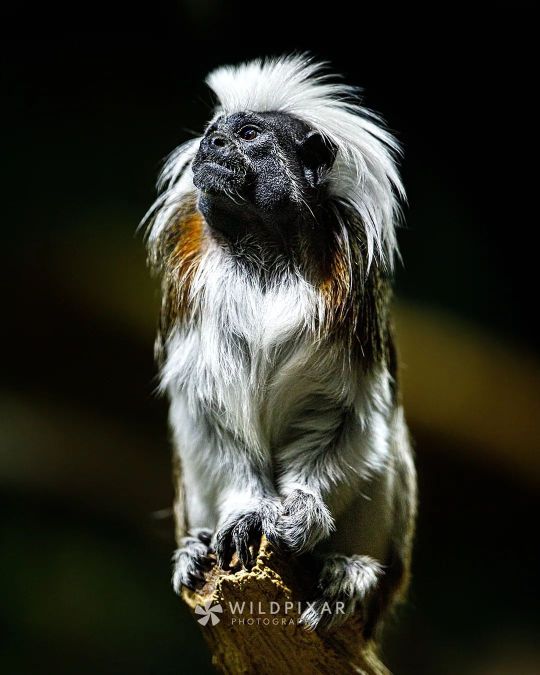
🐒 This little guy, weighing less than 0.5 kg (1.1 lb) can live up to 24 year and listens only punk rock 🤘🎸
Cotton-Top Tamarin (Saguinus Oedipus)
#cottontoptamarin#wildlife#littlemonkey#endangeredspecies#primate#conservation#wildpixar#saguinusoedipus#punkrock
14 notes
·
View notes
Photo

Cotton-top Tamarin (Saguinus oedipus) by Wade Tregaskis https://flic.kr/p/KE4NAp
26 notes
·
View notes
Photo

The cotton-top tamarin (Saguinus oedipus) is a small New World monkey weighing less than 0.5 kg (1.1 lb). This New World Monkey can live up to 24 years old, but most of them die at 13 years old. One of the smallest primates, the cotton-top tamarin is easily recognized by the long, white sagittal crest. Communication between cotton-top tamarins is sophisticated and shows evidence of grammatical structure, a language feature that must be acquired.
33 notes
·
View notes
Photo

Cotton Top Tamarin
Saguinus oedipus
Source: Here
190 notes
·
View notes
Photo

Check out that crest on the Cotton-Top Tamarin (Saguinus oedipus)!
The forests of northwestern Colombia is where this primate makes its home. This monkey is small in size, weighing only about a maximum of 1 pound. It feeds mostly on insects, but also eats fruit, nectar, and sap. It’s one of South America’s most endangered primates, with deforestation and trapping for pet trade posing the biggest threats.
Photo: © Michael Gäbler / Wikimedia Commons / CC BY-SA 3.0
via: American Museum of Natural History
31 notes
·
View notes
Photo



Cotton-top tamarin
From Wikipedia, the free encyclopedia
The cotton-top tamarin (Saguinus oedipus) is a small New World monkey weighing less than 0.5 kg (1.1 lb). This New World Monkey can live up to 24 years old, but most of them die at 13 years old. One of the smallest primates, the cotton-top tamarin is easily recognized by the long, white sagittal crest extending from its forehead to its shoulders. The species is found in tropical forest edges and secondary forests in northwestern Colombia, where it is arboreal and diurnal. Its diet includes insects and plant exudates, and it is an important seed disperser in the tropical ecosystem.
The cotton-top tamarin displays a wide variety of social behaviors. In particular, groups form a clear dominance hierarchy where only dominant pairs breed. The female normally gives birth to twins and uses pheromones to prevent other females in the group from breeding. These tamarins have been extensively studied for their high level of cooperative care, as well as altruistic and spiteful behaviors. Communication between cotton-top tamarins is sophisticated and shows evidence of grammatical structure, a language feature that must be acquired.
Up to 40,000 cotton-top tamarins are thought to have been caught and exported for use in biomedical research before 1976, when CITES gave them the highest level of protection and all international trade was banned. Now, the species is at risk due to large-scale habitat destruction, as the lowland forest in northwestern Colombia where the cotton-top tamarin is found has been reduced to 5% of its previous area. It is currently classified as critically endangered and is one of the rarest primates in the world, with only 6,000 individuals left in the wild.
2 notes
·
View notes
Text
Cotton-headed Tamarin Saguinus oedipus — Palm Oil Detectives
Cotton-headed Tamarin Saguinus oedipus — Palm Oil Detectives
View On WordPress
0 notes
Photo
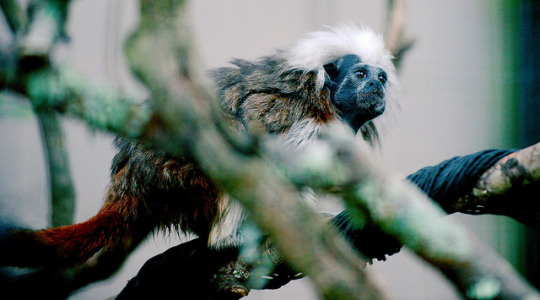
Photo: Josh More - flickr
Cotton Top Tamarin
Saguinus Oedipus
You have to spot the forehead and the shoulder of this animal for it has the long white sagittal crest. The weight of cotton-top tamarin is less than 1.1 lb or 0.5 kilogram. It is considered as the diurnal and arboreal animal. You can spot them living in the northwestern Colombia at the secondary forests and tropical forest edges.

Photo: Mercure hermes - flickr


Photos: _paVan_ - flickr

Photo: Johnson - flickr


Photo: jim_2wilson - flickr
9 notes
·
View notes
Text








Según datos de la Unión Internacional para la Conservación de la Naturaleza, el organismo internacional con mayor potestad sobre el problema, aproximadamente 5.200 especies de animales se encuentran en peligro de extinción en la actualidad. Además, en un desglose por clase, se encuentran en peligro de extinción el 11% de las aves, el 20% de los reptiles, el 34% de los peces y 25% de los anfibios y mamíferos.Gorila de montaña
Oso polar
Lince ibérico
Tigre de Sumatra
Rinoceronte blanco
Leopardo de las nieves
Oso panda
Chimpancé común
Pangolín
Orangután de Borneo
Ajolote
Atún rojoEstas son las diez especies de animales más amenazadas en Colombia
Tortugas marinas. ...
Tití cabeciblanco (Saguinus oedipus) ...
Oso de anteojos (Tremarctos Ornatus) ...
Manatí del Caribe (Trichechus manatus) ...
Danta o Tapir centroamericano (Tapirus bairdii) (EN) ...
Jaguar (Panthera Onca) (NT) ...
Puma (Puma concolor) (LC por la UICN, NT en categoría nacional). ...
Cóndor de los Andes (Vultur gryphus) (NT)
Delfín rosado
Iguana
0 notes